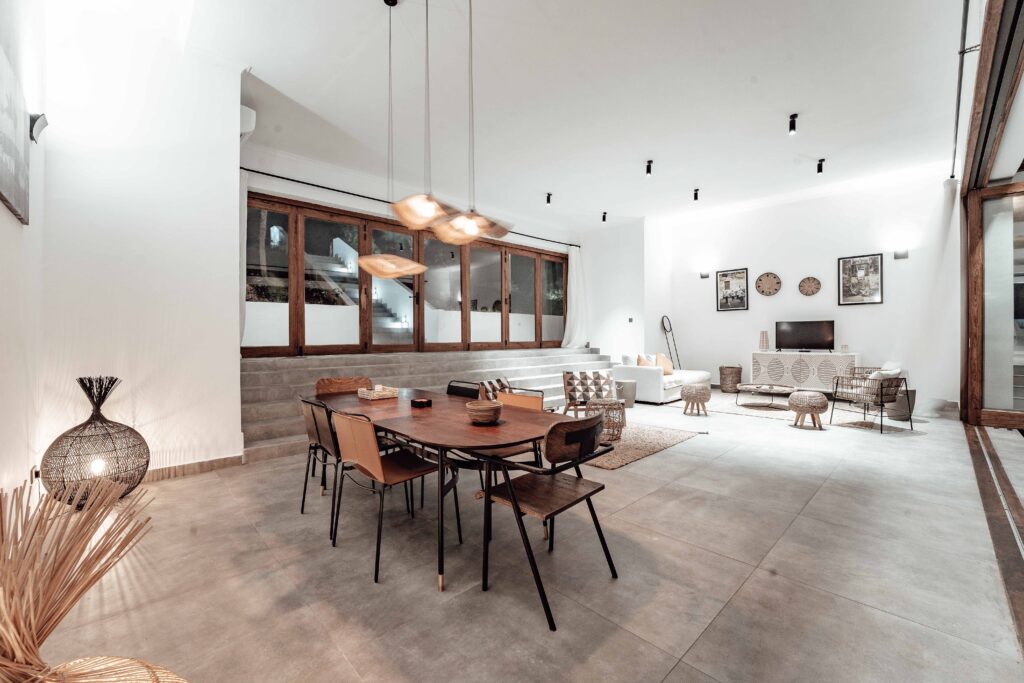As the world becomes more environmentally conscious, sustainable interior design is becoming increasingly important. Not only is it better for the planet, but it can also save you money in the long run. Here are just a few ways that sustainable interior design can make a difference in your home or business.
Use natural materials:
One of the easiest ways to make your space more sustainable is to use natural materials. This includes things like wood, bamboo, cork, and linen. Not only are these materials better for the environment, but they also bring a sense of warmth and natural beauty to any space.
Incorporate plants:
Adding plants to your interior design not only brings a touch of nature inside, but it also helps to improve air quality. Plants naturally absorb carbon dioxide and release oxygen, making for a healthier living environment.
Think about lighting:
Lighting can make a big difference in the sustainability of your space. Using LED lights, for example, can save you a significant amount of money on your electricity bill over time. Additionally, natural light can be used to brighten a space, reducing the need for artificial lighting.
Invest in energy-efficient appliances:
Another way to make your space more sustainable is to invest in energy-efficient appliances. This includes things like Energy Star-rated appliances, which have been independently verified to be more energy efficient than standard appliances.
Consider your furnishings:
Furnishings can also make a difference in the sustainability of your space. Choosing furniture that is made of sustainable materials and that is built to last will not only save you money, but it will also help to reduce waste.
Be mindful of water usage:
Water is a precious resource and being mindful of water usage is an important aspect of sustainable design. Low-flow showerheads, faucets, and toilets can significantly reduce water usage, saving money on your water bill and reducing strain on the environment.
Use eco-friendly cleaning products:
Cleaning your space is an important part of keeping it looking great, but the chemicals in traditional cleaning products can be harmful to both the environment and your health. Using eco-friendly cleaning products can help to reduce the impact of cleaning on the environment.
Use reclaimed or repurposed materials:
Incorporating reclaimed or repurposed materials into your design is a great way to be sustainable. This can include things like reclaimed wood, vintage furniture, or repurposed textiles. Not only is this good for the environment, but it can also add unique character to your space.
Prioritize durability:
When choosing materials and furnishings, consider their durability. Items that are well-made and built to last will not only save you money in the long run, but they will also generate less waste.
Choose low-VOC (volatile organic compound) paints and finishes:
Traditional paints and finishes can emit harmful chemicals into the air, known as VOCs. These can be harmful to both the environment and your health. Choosing low VOC options can help to reduce the impact of painting and finishing on the environment.
Implement a recycling program:
Set up a recycling program in your home or office to reduce waste and promote sustainability. This can include separate bins for paper, plastics, and other recyclable materials.
Support local and sustainable businesses:
When purchasing materials and furnishings for your space, consider supporting local and sustainable businesses. This can include things like choosing to purchase from a local furniture maker who uses sustainable materials or buying from a store that specializes in eco-friendly products.
Invest in smart technology:
Smart technology can help to make your space more sustainable. This can include things like smart thermostats, which allow you to control your heating and cooling remotely, or smart lighting systems, which automatically adjust lighting levels based on natural light and occupancy.
Consider the lifecycle of products:
When making decisions about materials and furnishings, consider the entire lifecycle of the product – from its production to its disposal. Products that have a shorter lifecycle, or that have a negative impact on the environment at the end of their lifecycle, may not be the most sustainable choice.
Conclusion
Sustainable interior design is not only better for the planet, but it can also be better for your wallet. By using natural materials, incorporating plants, thinking about lighting, investing in energy-efficient appliances, being mindful of water usage, and using eco-friendly cleaning products, you can create a space that is both beautiful and sustainable.
By implementing these sustainable interior design strategies, you can take your commitment to the environment to the next level and make a meaningful impact on the planet, while also saving money in the long run.

